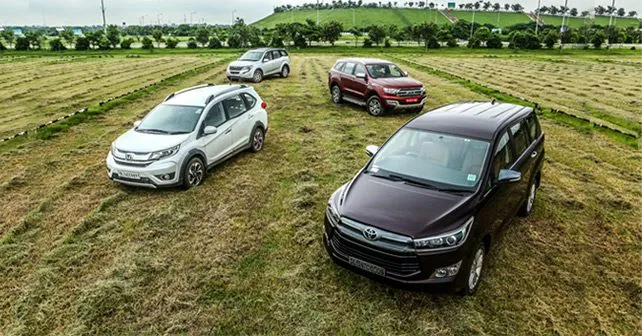
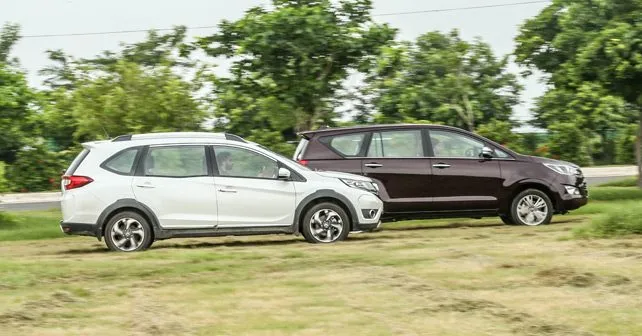
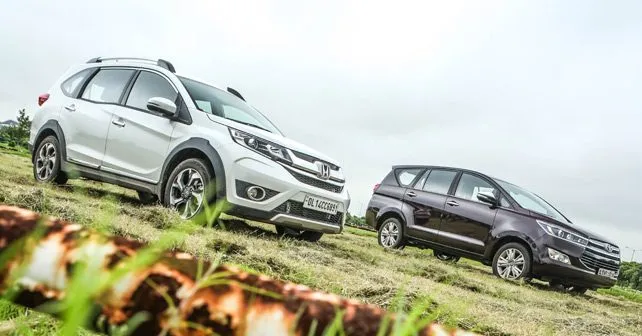
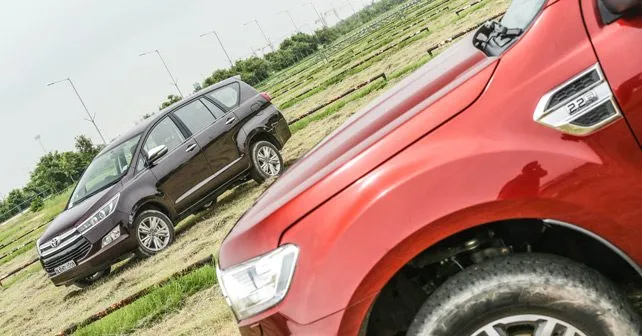
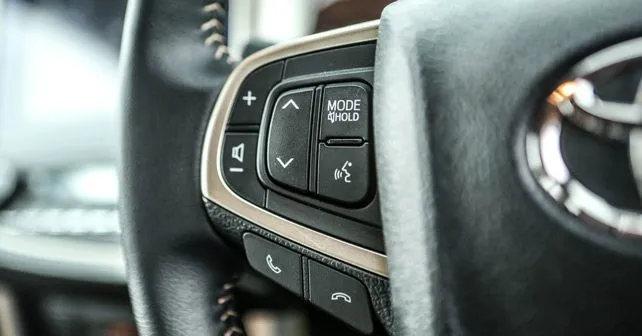


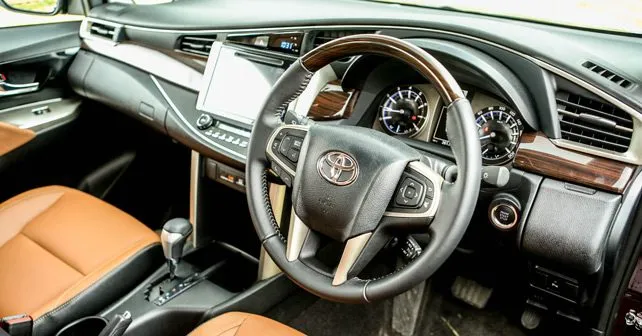
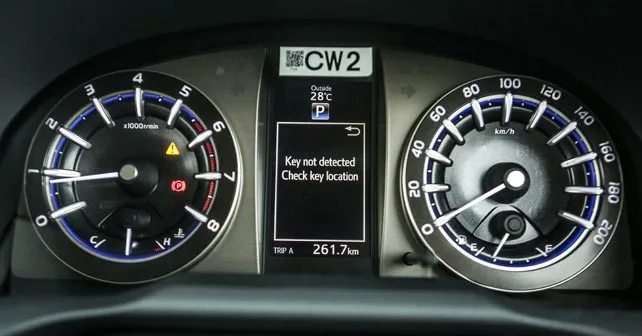

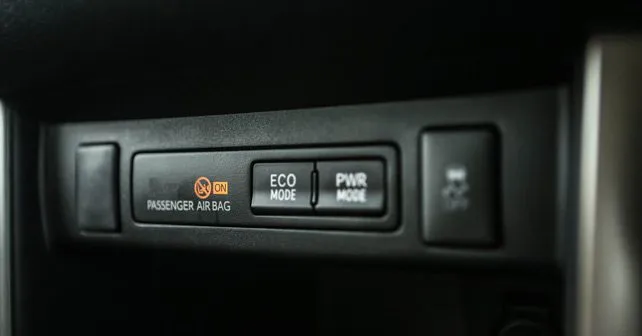
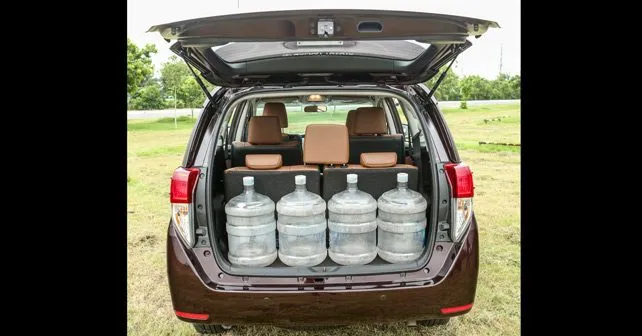
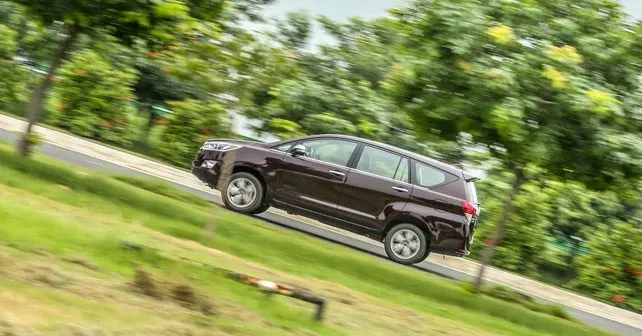
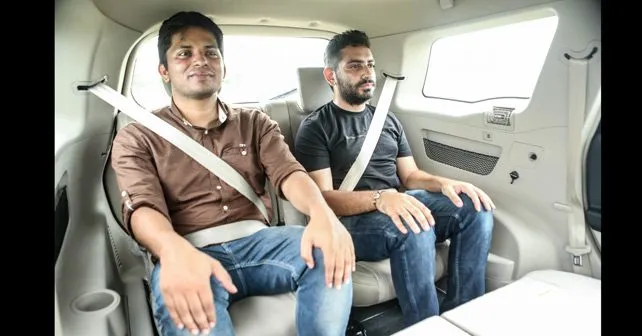
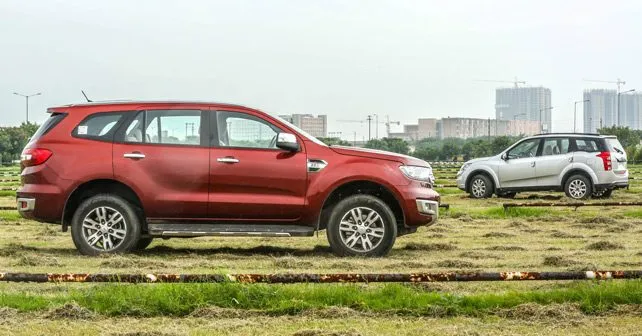
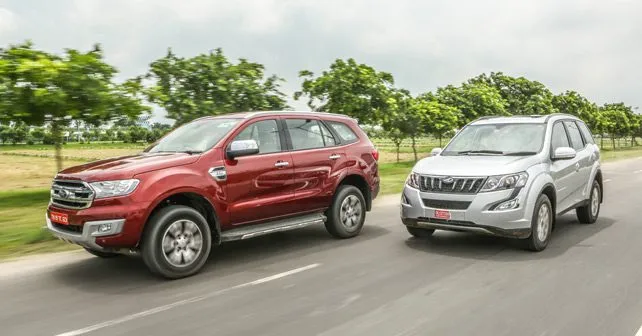
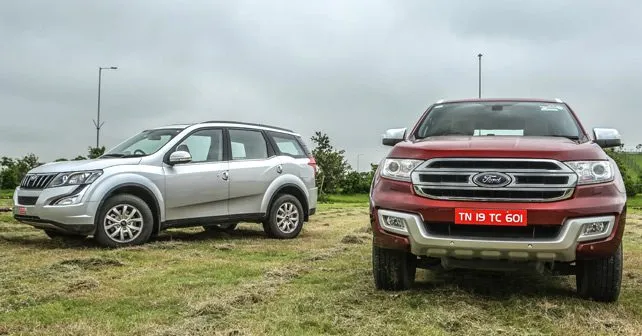

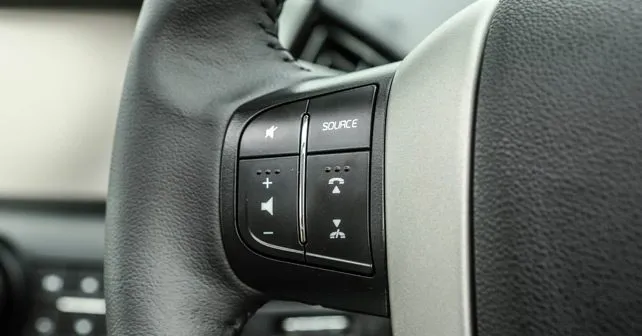
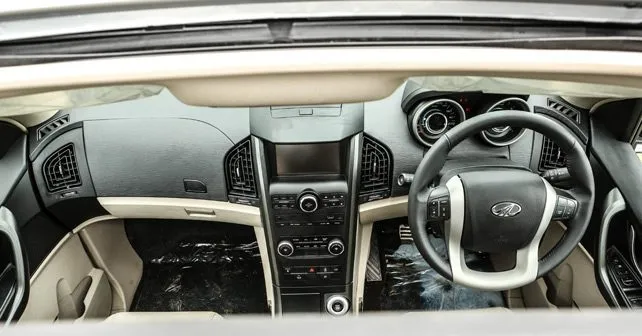
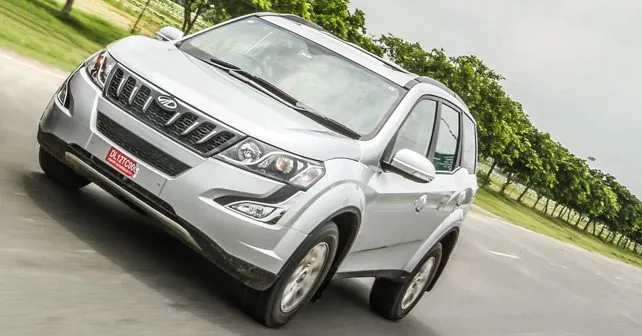
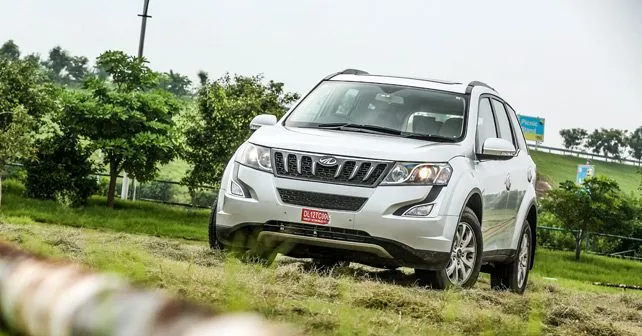
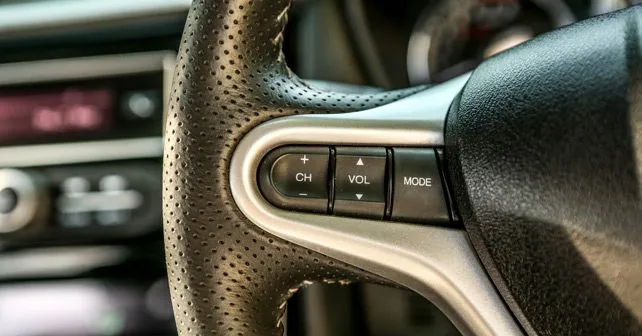

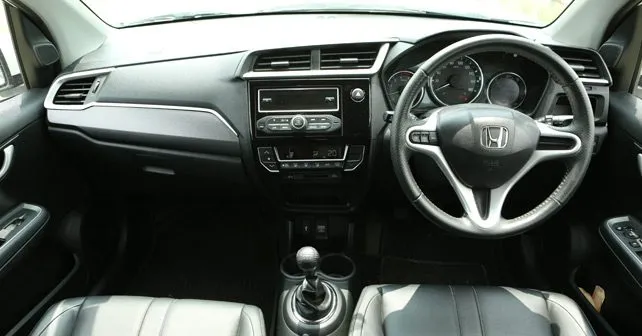
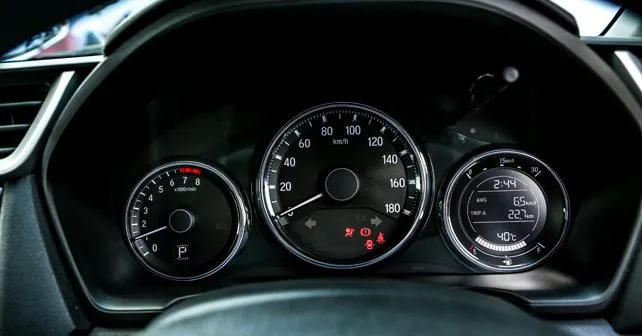

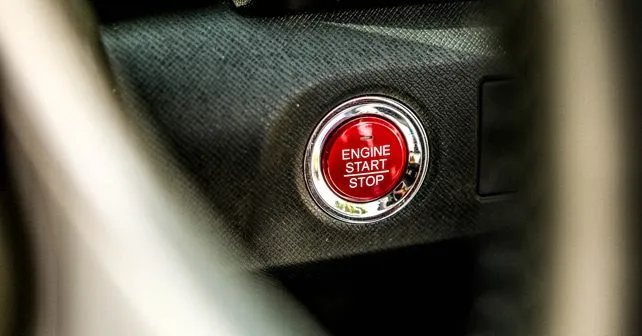
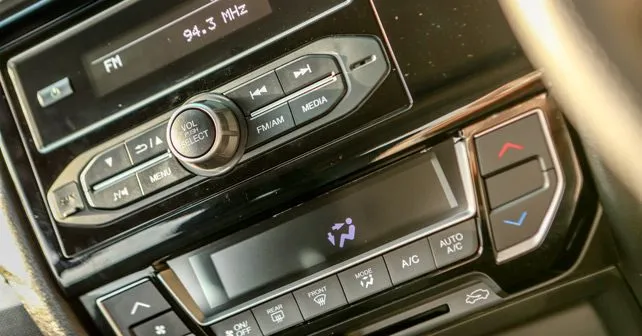
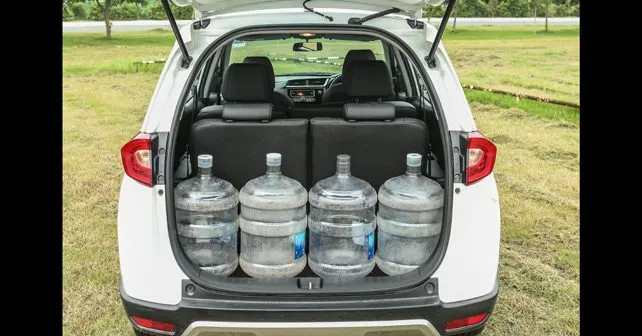
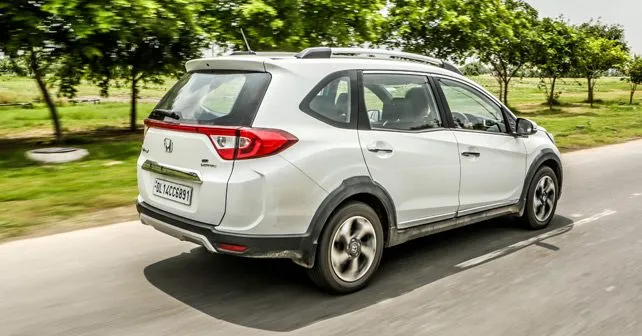

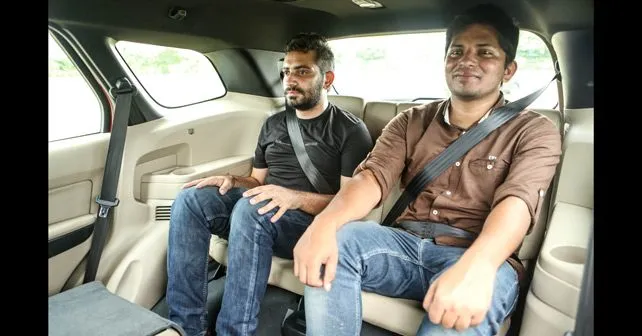
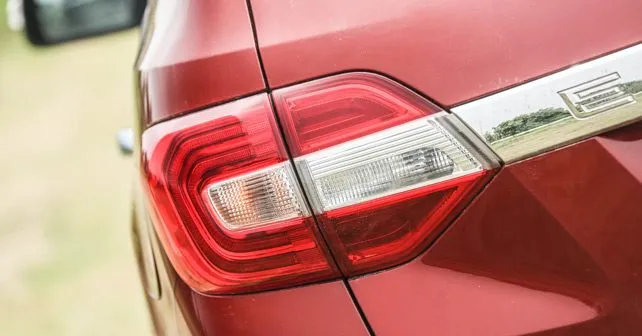
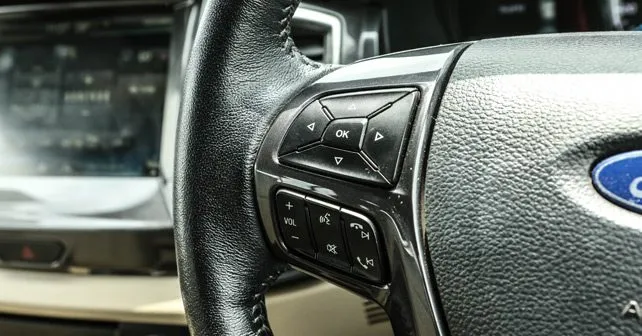

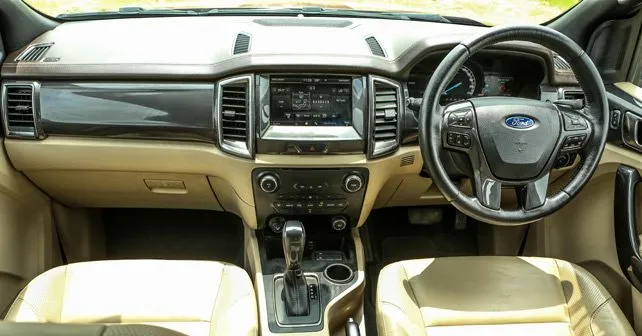
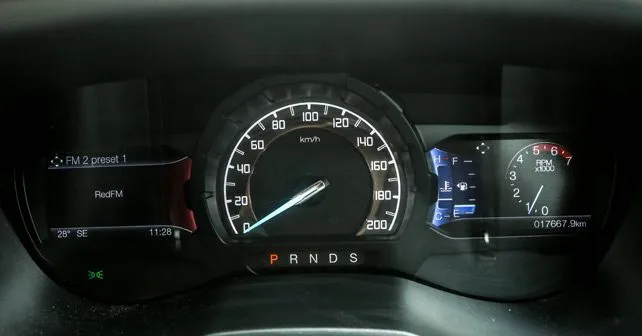
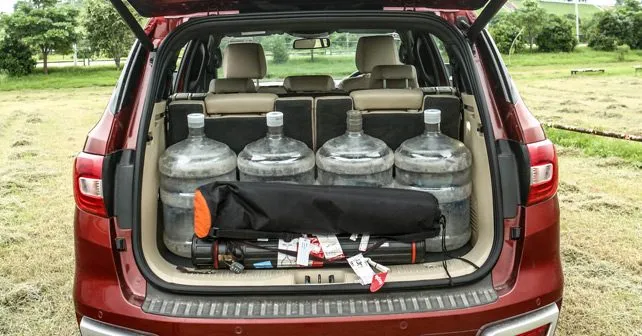

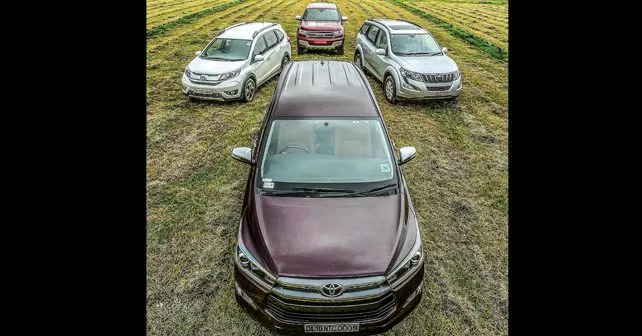
In an unusual value-for-money to seven-seat comfort comparison, we lined up the Honda BR-V, Toyota Innova Crysta, Mahindra XUV500, and Ford Endeavour for a comparison. Read it here.
Seven-seaters or MPVs have always appealed more to the head than the heart. By bringing in the Innova Crysta, Toyota may have made MPVs desirable again – but can it compete in a world that’s madly in love with crossovers and SUVs, especially when these can also be had with seven seats. That’s what we’re here to find out…
Space. Tell me who doesn’t want more of it? Whether it’s in the house, out on the road, in your phone memory, or even somewhere as trivial as your trouser pockets – it’s always good to have that little bit extra. Adding room in a car, though, is a different story altogether. It makes cars look ungainly, and that’s why most people loathe the idea of buying an MPV.
Family haulers inherently suffer from this penalty. They just never look right, and certainly not special enough to catch your fancy. Plus, they’re typically uninspiring to drive. The only reason you’d want one, then, is because you’ve either procreated one too many times or have a joint family that moves together, prays together, stays together, and all that. MPVs have surely fallen out of flavour in our market, except for, maybe, one…
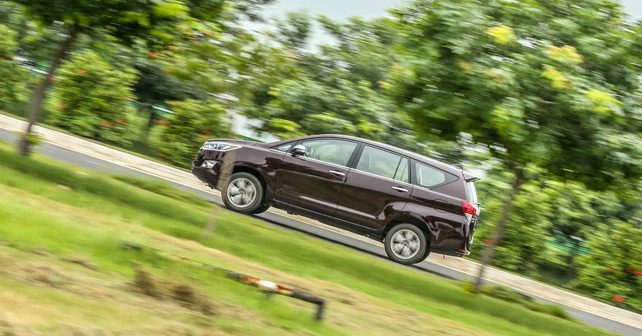
For starters, both are more affordable seven-seaters than the Innova, but, more importantly, these two are classified as – drumroll – SUVs. You can buy the top-spec BR-V for roughly the same amount as the base Innova, while the range topping XUV500 is more than Rs. 2 lakhs cheaper than the top-spec Innova. Great value for money, isn’t it? But, then again, if your heart is set on the fully-loaded Innova Crysta, it’s likely that money isn’t that much of a constraint for you. In this case, perhaps you could stretch your budget by a couple lakhs more and buy a seven-seater that also tugs at your heartstrings? A big-burly, go-anywhere SUV. Like, say, the Ford Endeavour.
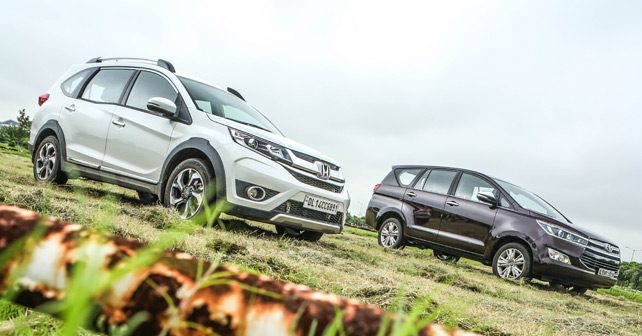
By this time you may have realised that this isn’t a direct comparison test. Our motive behind assembling these cars together is to see which seven-seater is the most practical – but, at the same time, it should drive and feel special to own even when you’re not using all three rows.
Now, the old Innova was a widely popular vehicle among private car owners as well as fleet operators, owing to a simple fact that it was an honest-to-goodness people mover – comfortable, spacious, reliable, and fairly decent to drive. However, towards the end of its lifecycle, the Innova was seen as a commodity for your airport runs or outstation jaunts – it was viewed as more of a people-mover in the true sense.
Enter the Innova Crysta – and it doesn’t take long to realise that Toyota is back in the game. And how! The second-gen model builds on the strengths of its predecessor, but it departs from its heritage in one very important way – this is an utterly polished and refined package. Okay, there’s no getting away from the fact that it still has traces of the old Innova in its profile, but thanks to its bold new Camry-inspired family face, sleek swept-back headlamps with LEDs, prominent shoulder lines and bigger 17-inch wheels, the Innova Crysta is far more imposing than before.
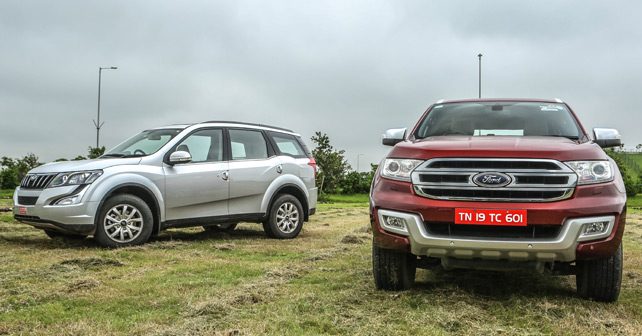
Parked next to the Innova Crysta, the Ford Endeavour feels like a rank outsider (which is exactly what it is). Forget comparing it with an MPV, the Ford is ludicrously big – even by over-the-top SUV standards. Truth be told, it looks quite silly in urban settings – although it is a ridiculously cool sight to behold.
The Mahindra XUV500 has a bit of this cool factor as well – although it’s a chintzy kind of cool. The front end of the XUV500 is just too busy with numerous cheetah-inspired lines – toothy grille, fussy fog lamp shrouds and excessive chrome. Personally, I find it a bit too loud. That said, the short overhangs and beefed-up stance give the XUV500 a proportionate appearance.
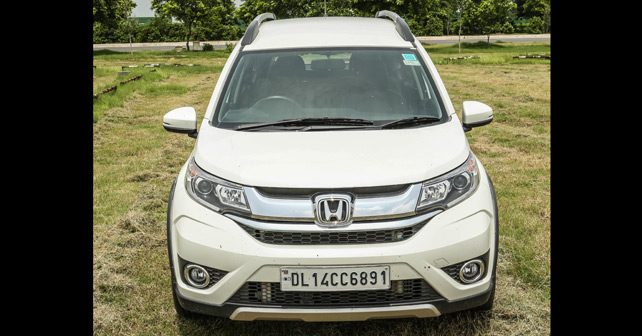
When you examine the exterior of the BR-V you realise that, like the XUV500, the Honda too has many design elements merging together in the front. Fortunately, when viewed from head-on, it has a pretty cohesive face. Move over to the side though, or around the back, and it becomes clear that Honda’s designers have performed a miracle when designing the front of this car – because, in profile, it’s unapologetically identical to the Mobilio. As for the rear, it’s quite narrow and upright in comparison to the pointy front – imparting a slightly disproportionate look to the car.
On the outside, the BR-V reminds you of the Mobilio, but when you step inside you’re welcomed by a dashboard that’s lifted directly from the Amaze! Of course, to provide a richer and more upmarket feel to the cabin, the BR-V gets some extra bits and bobs – such as a Civic-style leather wrapped steering wheel, leather padded arm rests and leather seats. What really stands out, though, is the lack of some basic equipment in a car of this size and price. You don’t get a reverse parking camera or sensors, there’s no touchscreen infotainment system either, and the steering wheel is only tilt adjustable. And this is the top-end variant that we’re talking about.

Since you sit with your knees higher up than you’d like, third-row passengers may not entirely enjoy long journeys in the Innova. Plus, headroom is just about adequate. But a large and cavernous boot means that you don’t have to worry about your luggage even with the last row up.
Surprisingly, the base trim of Innova is pretty decently equipped in comparison. It may not have automatic air-conditioning, electrically retractable ORVMs, a music system, projector lamps, Bluetooth connectivity, leather seats or rear power windows, but you do get ABS with EBD and brake-assist (the BR-V only gets ABS and EBD), 3 airbags as opposed to 2 in the Honda, tilt and telescopic steering and individual Captain seats in the middle row – a crucial detail for customers looking for more space and comfort. But is that enough to make the Crysta a better seven-seater? Not entirely.
You see, while the Crysta trumps the BR-V in terms of second row comfort, it gets a lot more competitive between the two when you compare third-row comfort. Surprisingly, as you can see in the pictures, the BR-V has better headroom. Legroom is just about enough to squeeze a pair of fully-grown adults in both cars, but since you sit with your knees higher up in the Toyota, the BR-V’s third bench feels a tad more comfortable with its virtually flat floor. Our only complaint is that the seat cushioning is not quite as comfortable in the BR-V.

Surprisingly, the BR-V’s third row offers the most headroom in this group. Legroom is pretty good too, and so is luggage capacity – as you can see we managed to fit all four of our 20-litre bottles (should you be that thirsty). The only problem is that the third row in the BR-V doesn’t get dedicated AC vents.[/caption]
For the price, the Honda certainly makes a case for itself. However, as a people mover, the Innova’s main USP is its ride quality – which is better damped and more refined than the stiffly sprung BR-V. Of course, stiffer springs make the BR-V more enjoyable to drive. Around corners, it feels more like a sedan than a crossover. The Innova, on the other hand, feels like a van at best while tackling a bend.
The BR-V and the Innova are the only ones here that are available with petrol engines mated to an automatic gearbox, but the Innova’s 2.7-litre petrol AT that we drove for this test is in a different league altogether. Built from the ground up, this engine develops 163bhp of maximum power and 245Nm of peak torque. There are two modes – Eco and Power – which, I think, are pretty self-explanatory. In the automatic versions – both petrol and diesel – power is channelled to the rear wheels via a 6-speed automatic (torque converter). Manual versions get a 5-speed manual.
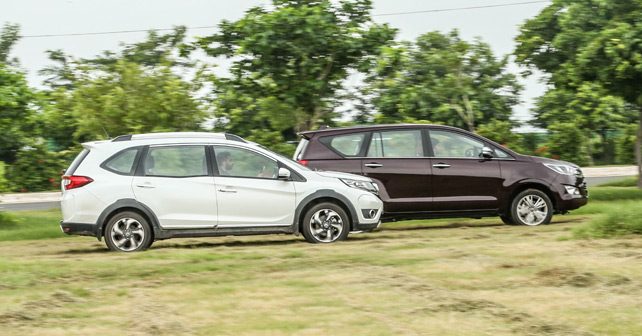
Now when you’re ambling around in town, the refinement levels of the engine are superb – power delivery is linear and the gearbox performs without a fuss. Should you need more performance, you can simply slot the gear lever into S and the engine into its Power mode. The gearbox then holds the cogs for longer, but the gearshifts themselves aren’t exactly lightning quick. You can manually row through the gears using the sequential shifter, but, again, don’t expect earth-shattering performance. The drivetrain is all about comfort here.
Besides that, the Innova’s diesel engines – the 2.4-litre and 2.8-litre mills – are also much more powerful than the BR-V’s 1.5-litre diesel unit. Even under normal driving conditions, the Honda’s diesel engine (the one on test here) feels laboured when you step on the throttle. With full luggage and seven occupants, it’ll run out of steam sooner rather than later. Nevertheless, it will be much, much more efficient – even when you’re thrashing the motor.
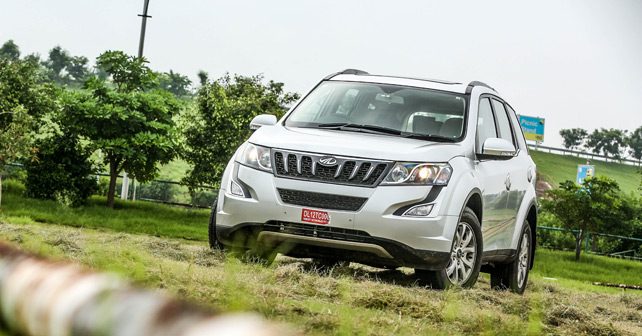
If you want a similarly priced product that can keep up with the Innova Crysta, while offering similar space and features, the XUV500 should come across as a worthy candidate. The one we’re driving here is the downsized 1.99-litre turbo-diesel motor for Delhi-NCR – thanks to the now erstwhile diesel ban. In terms of performance, this is at par with the bigger motor since it delivers the same power output of 140bhp with a slightly lower torque figure of 320Nm (as compared to 330Nm produced by the 2.2-litre engine). It can be paired with a 6-speed manual as well as a 6-speed automatic in either FWD or AWD configurations.
The engine in the XUV500 is a gem – it has oodles of torque low down, with minimal turbo lag. So strong is the torque delivery from lower revs that you’ll inadvertently find yourself generating a little bit of wheelspin in second gear. On the highway, the motor feels even more at ease – mainly because the meat of the power lies between 2,000-4,000rpm. What’s truly remarkable, though, is the refinement of the motor. The engine never protests, even when you give it stick. High-speed stability is pretty good, but it does tend to wallow over undulations at high speeds. Plus, the handling balance always seems to keep you guessing.
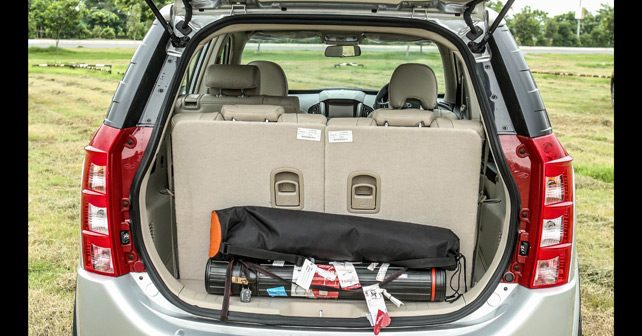
While the third row in the XUV is actually the most comfortable, it’s not exactly usable on a long journey because there’s absolutely no space whatsoever in the boot with the third row in place.[/caption]
The real killjoy, though, is the notchy gearbox – which also has long throws. Ergonomically, too, the XUV500 is a bit of mystery. The steering is only tilt adjustable – and while making adjustments it only seems to go further up and away from the driver. The clutch pedal also rests noticeably higher than usual. On the contrary, the seats – all three rows – are super comfortable and supportive. Plus, the XUV500 comes loaded with features – touchscreen infotainment, parking camera, sunroof, tyre-pressure monitoring system, electrically adjustable driver seat, 6 airbags, and more.
But how does the Mahindra fare as a seven-seater? The seats, as I just mentioned, are very comfortable. Legroom in the third row is decent, but, again, you sit almost upright. But it’s actually quite comfortable for adults during short trips. But even if you’re willing to go on a long journey while sitting in the third row, you can’t – because there’s simply no boot space with all three rows up.
Comparatively, the Crysta offers much more luggage room. In fact the BR-V, which is much smaller, has plenty of luggage space as well when compared to the XUV. Another thing that pulls the XUV down here is its cabin, which feels quite downmarket when compared with the Crysta. The Crysta’s cabin features a nicely sculpted dashboard, with silver and wooden panels. And the black and tan leather upholstery looks stunning. It’s also brimming with all the latest bells and whistles as far as its feature list goes – 7-inch touchscreen infotainment, automatic headlamps, automatic climate control, power adjustable driver seat, LED ambient lighting, etc.

When you sit inside the Toyota, you quickly realise that it’s the most well-built of this quartet. Yes, better than the more expensive Ford Endeavour. Don’t get me wrong, getting inside – actually, climbing inside – the Endeavour is an occasion in itself. Although the Innova’s plastics feel better, the top of the dash on the Endeavour is wrapped in leather – below which resides a large 8-inch touchscreen system with controls for entertainment and air-conditioning, etc. But when you hold that chunky steering wheel, cocoon yourself in that cosy leather seat and get a commanding view of the world outside, the Endeavour plasters a grin on your face like no other machine here.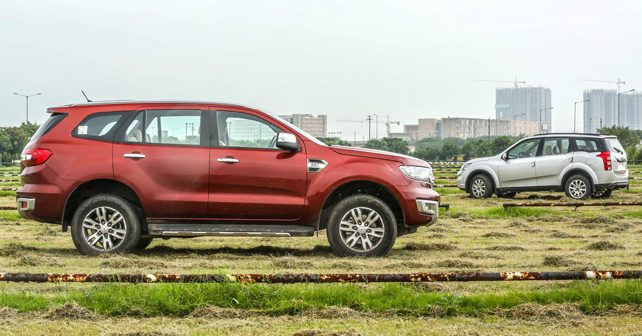
We drove the 2.2-litre automatic RWD version of the Endeavour for this test, although there’s the cheaper manual version available as well. The powertrain is rated at 158bhp and produces a twisting force of 385Nm. On the move, the motor is supremely comfortable and extremely refined (thanks to active noise cancelling inside the cabin). Now this motor may not have the same urgency as the bigger unit found in the 3.2-litre version of this SUV, but at no point does it feel lethargic. The automatic gearbox compliments the powertrain well, allowing smooth transition between gears. Ride quality is simply phenomenal, while it brakes and handles in a remarkably surefooted manner for such a large machine.
As a seven-seater, the Endeavour is not the ideal choice though. Accessing the third row is quite complicated. You see, while in all the other three you can tumble the middle row seats down, the middle seats in the Endeavour are only the sliding and folding type – which can prove to be quite a nuisance. Also, because it has massive wheel wells that protrude into the cabin, there’s absolutely no legroom for the rear-most passengers. And even if you forgo third row comfort, there are a few more things that go against the Endeavour. The driver’s seat is electrically adjustable, but it doesn’t have lumbar support, while the xenon headlamps are appalling on a car that costs nearly 30 lakhs.

The middle row in the Endeavour doesn’t tumble down completely like the others here, which means accessing the third row is a bit of a limb-contorting affair. Moreover, Rahul and I were a little too close for comfort in the third row, as the protruding wheel arches eat up quite a bit of space. Boot capacity, though, is clearly the most of the lot.[/caption]
Verdict
If money is no object, I would buy the Endeavour with my eyes closed. In the company of the other seven-seaters here, the Endeavour is the one that makes you go weak at knees. It’s to grown men what a fluffy teddy bear is to little kids – you struggle to carry it around all the time, but you always want one. And that’s to say nothing of its go-anywhere ability.
However, if you start thinking from your head instead of your heart, the Endeavour is a pretty expensive toy and not especially good as a seven-seater. Add to that the fact that the most affordable Endeavour comes in Trend trim – which is seriously under-equipped when compared to the top-spec Innova Crysta.

Nothing here is as good value-for-money as the Mahindra XUV500. It comes loaded to the gills with features, it has an explosive powertrain that can be had in different configurations – FWD or AWD with automatic or manual, and it looks macho. However, as an outright people mover, the Mahindra doesn’t quite cut it. Its dismal boot space with the seats up and abysmal interior quality are deal breakers.
Now if value-for-money is what you’re after, the BR-V ticks all the boxes as a seven-seater. To be honest, we were all surprised by how good it turned out to be in this test. Its third row is almost as spacious as the Innova, there’s enough boot space to gobble up the luggage for weekend getaways, and the best part about the BR-V is that it feels like a car to drive. Agreed, its ride is not as refined as the Innova, and it could do with a few more niceties, but overall it is a well-rounded package for a family hauler.
I don’t think I need to tell you which machine comes out on top overall. With the Innova Crysta, Toyota has definitely moved the goal posts. Every component – whether inside the cabin or under the hood – has been thoroughly refined, and it completely redefines the nature of this machine. All things considered, the Innova is a MPV only by classification now. The Crysta suffix has truly transformed this machine into one that’s quite premium – and, therefore, quite desirable!
Also read: Mercedes-Benz GLC vs Land Rover Discovery Sport vs BMW X3 vs Volvo XC60
Engine: 2,694cc / In-line 4-cylinders / 16 valves / VVT-i
Fuel: Petrol
Transmission: 6-Speed Automatic / Rear Wheel Drive
Power: 163bhp @ 5,200rpm
Torque: 245Nm @ 4,000rpm
Price: Rs. 19.67 lakhs (Ex-showroom, Delhi)
X-Factor: Toyota has completely redefined the Innova, and moved it from being practical people-mover to a premium car that’s actually quite desirable. It’s still very practical.

Write your Comment on